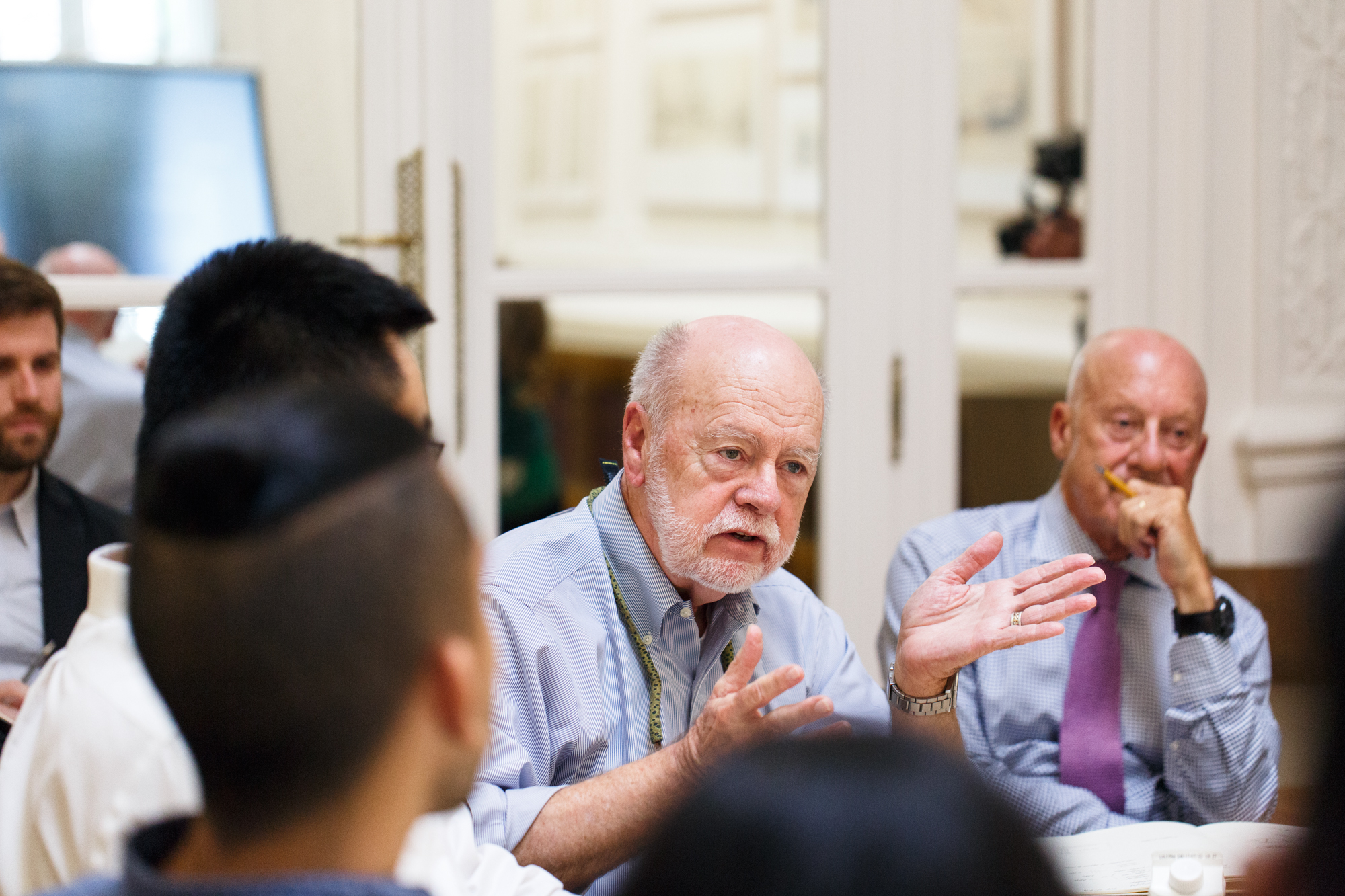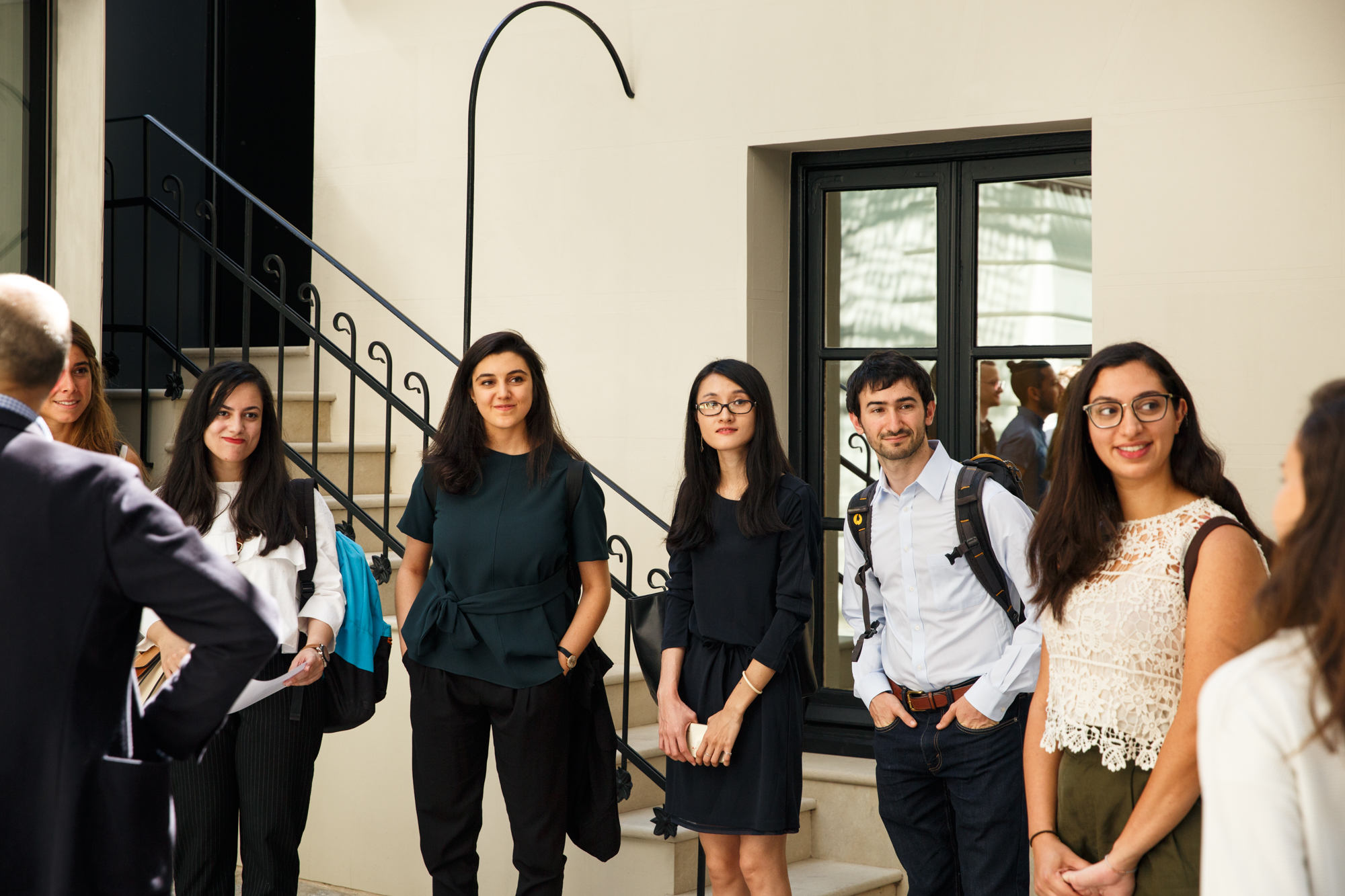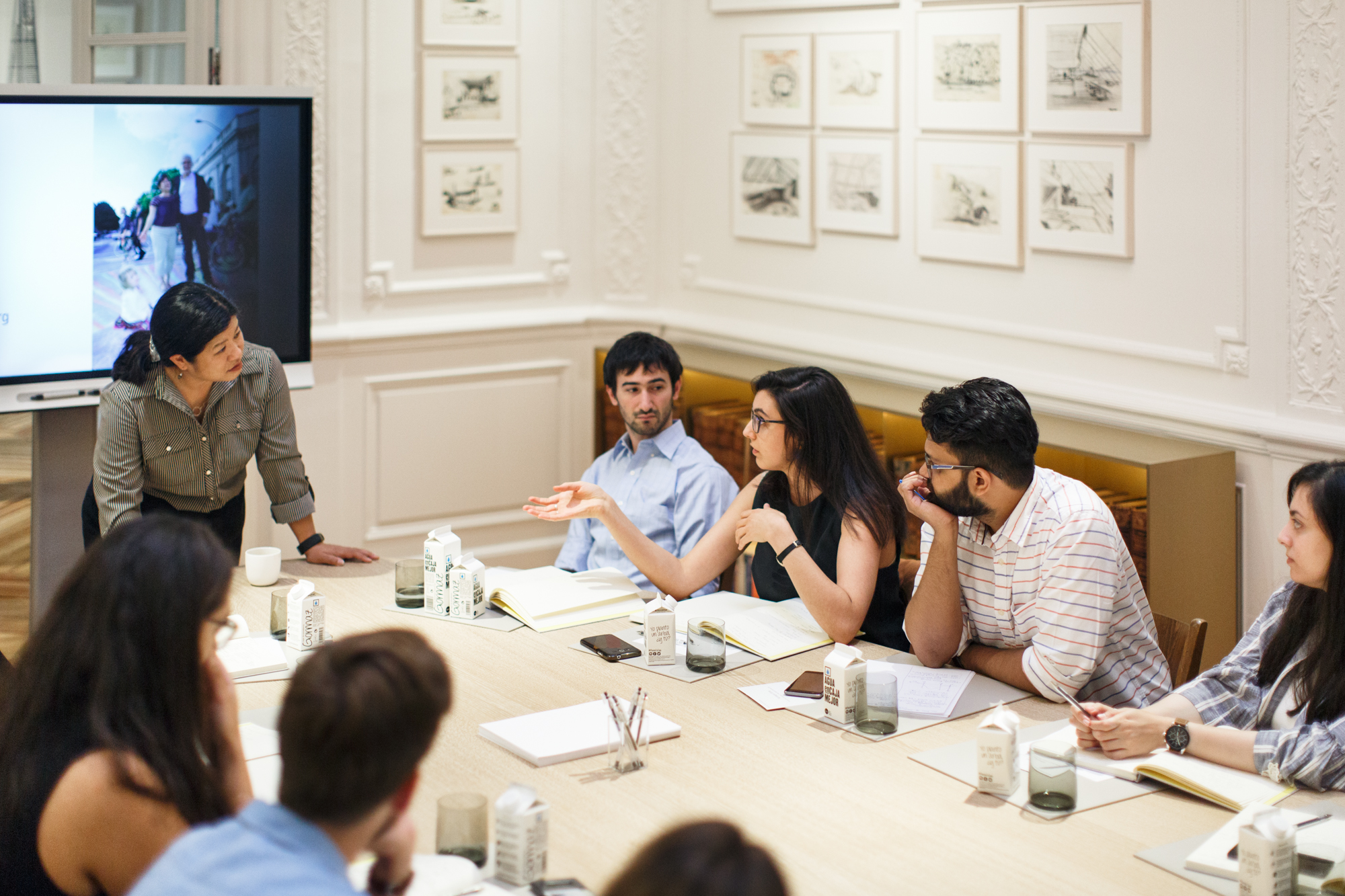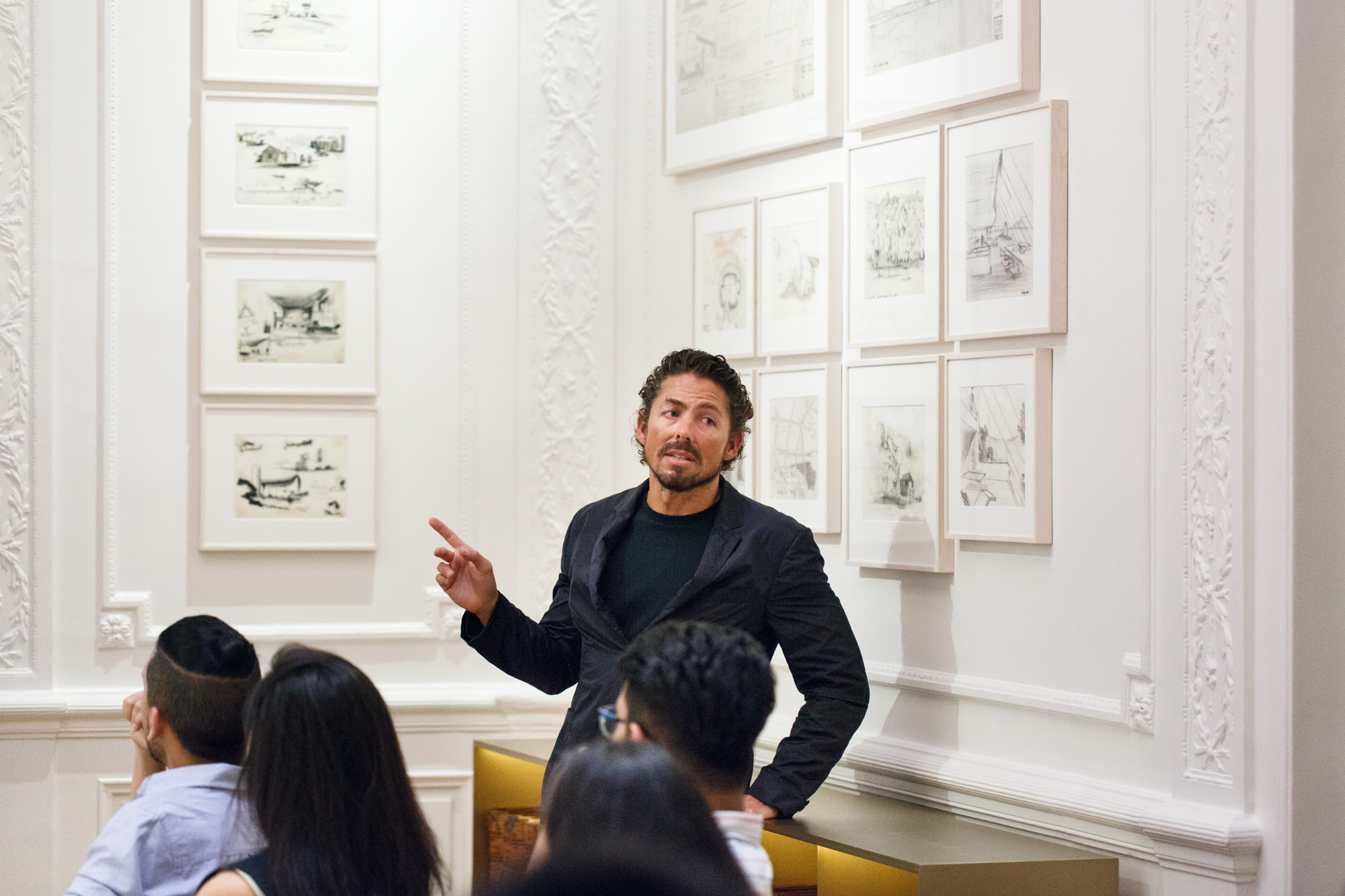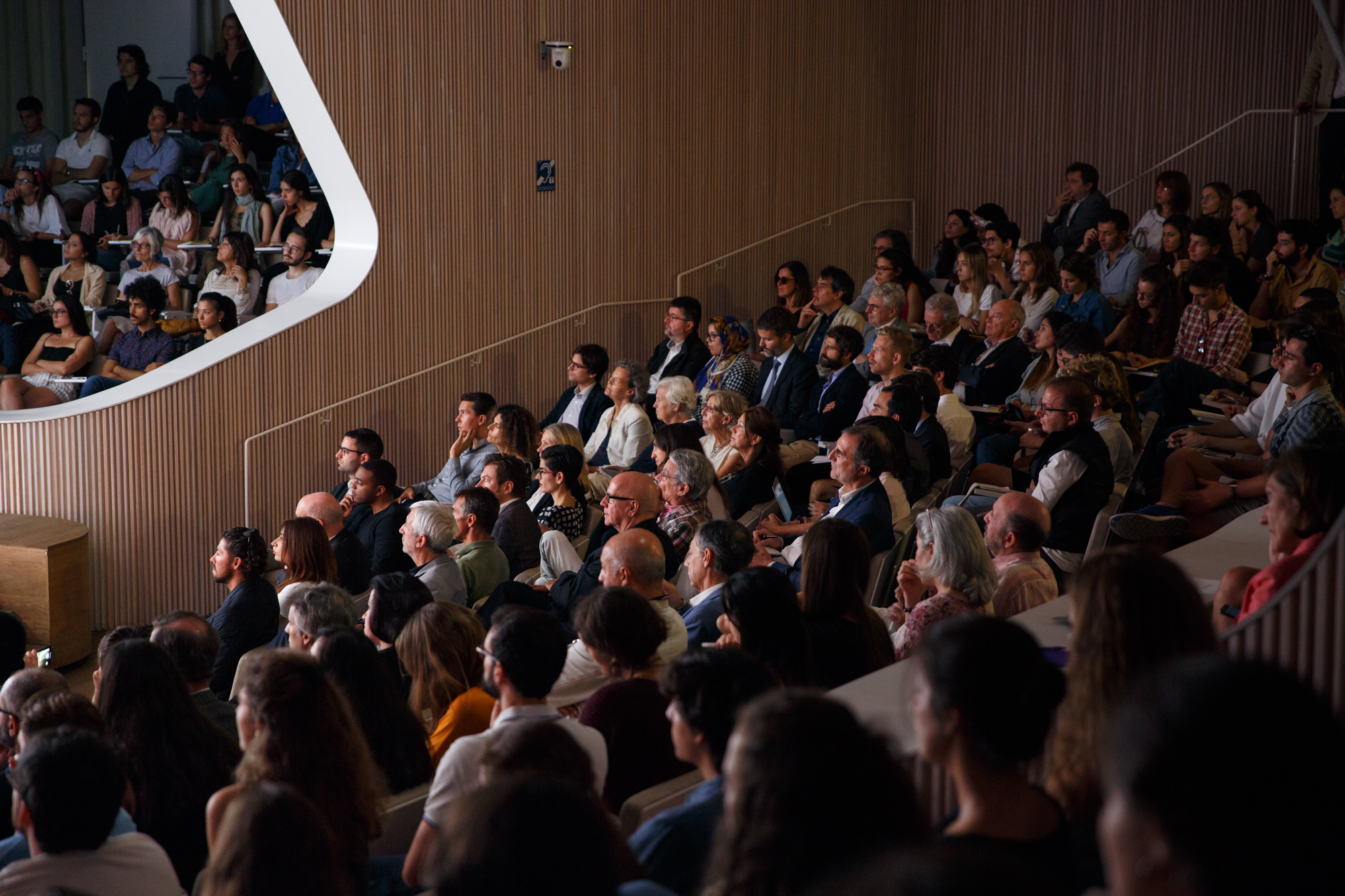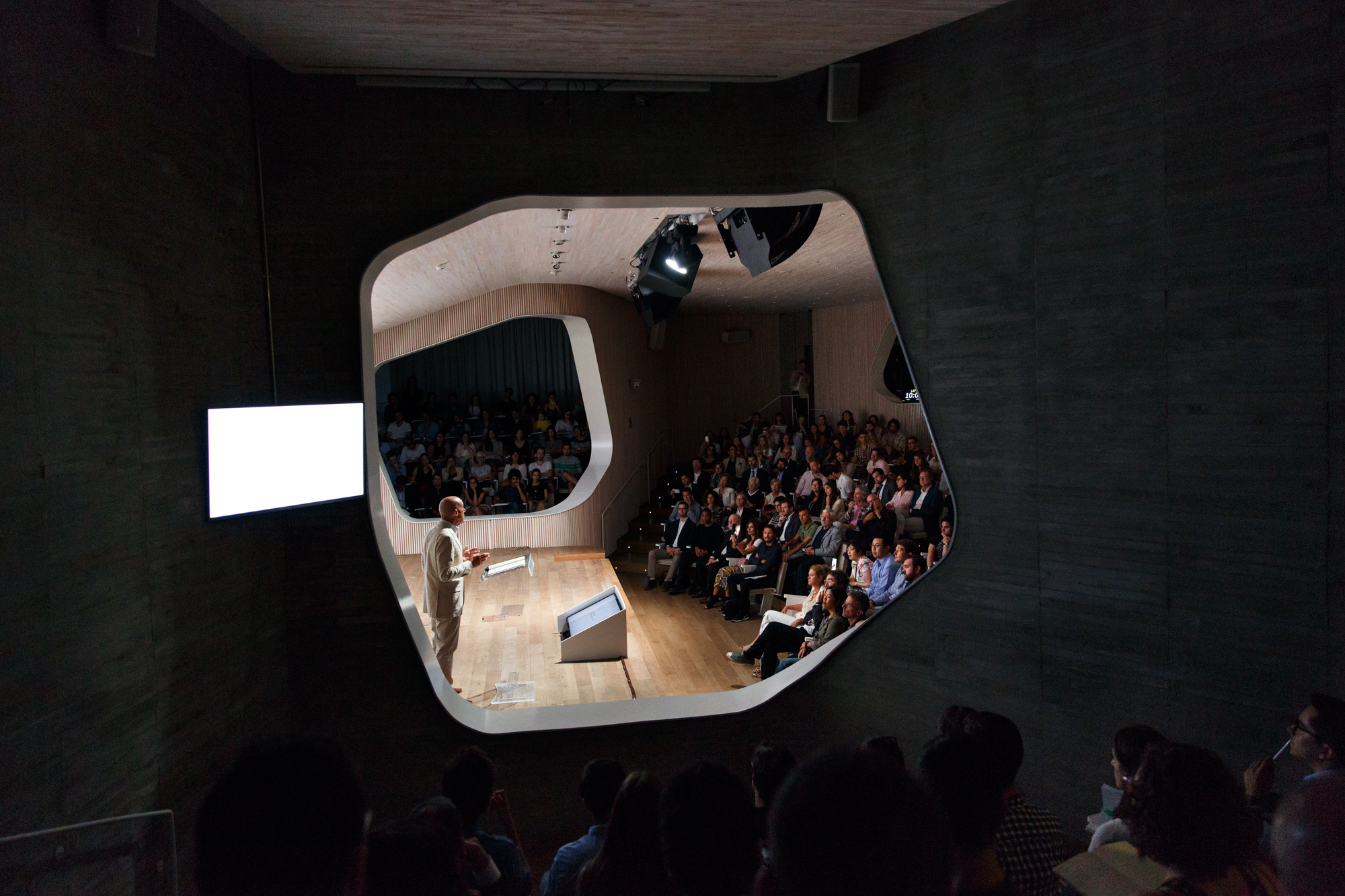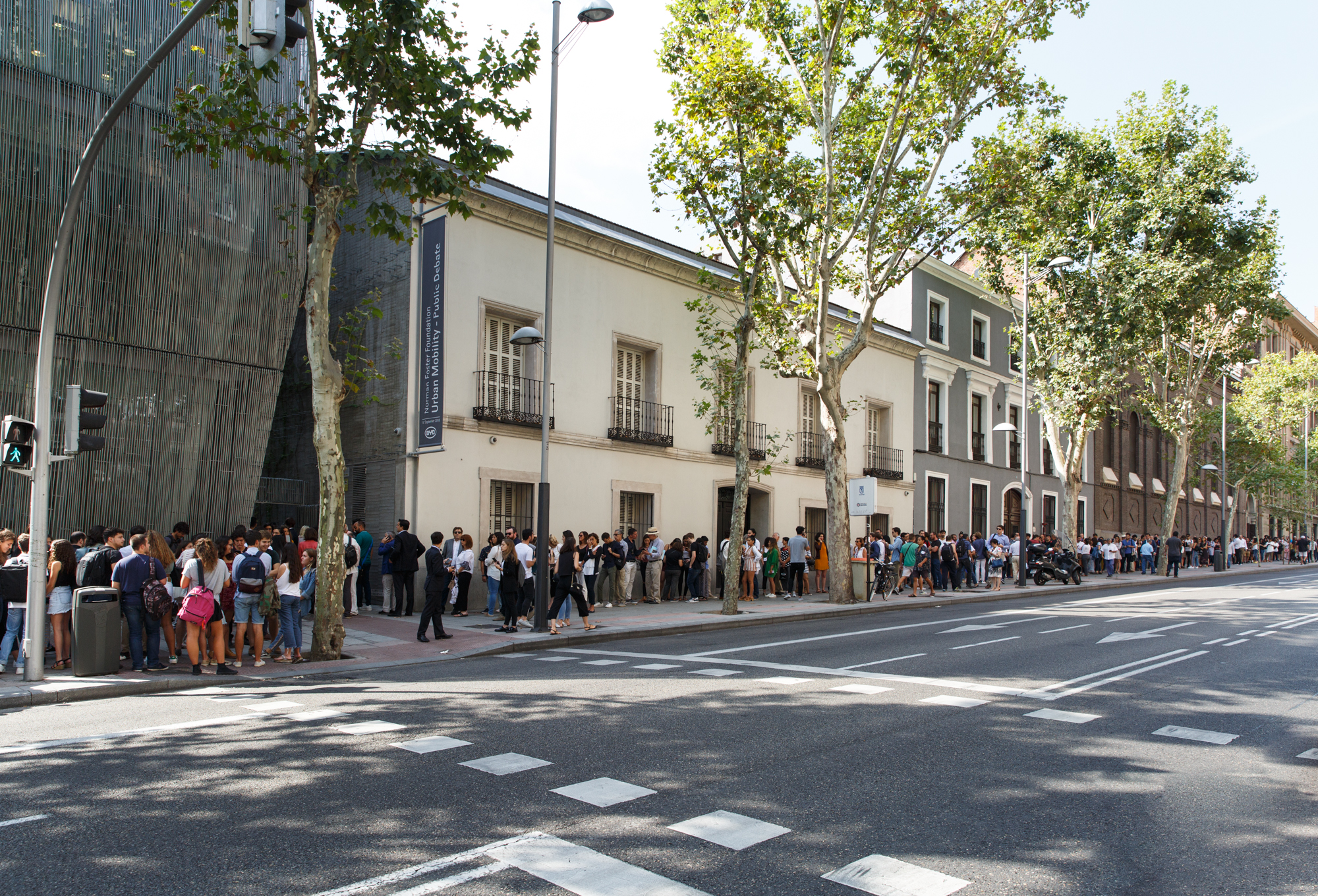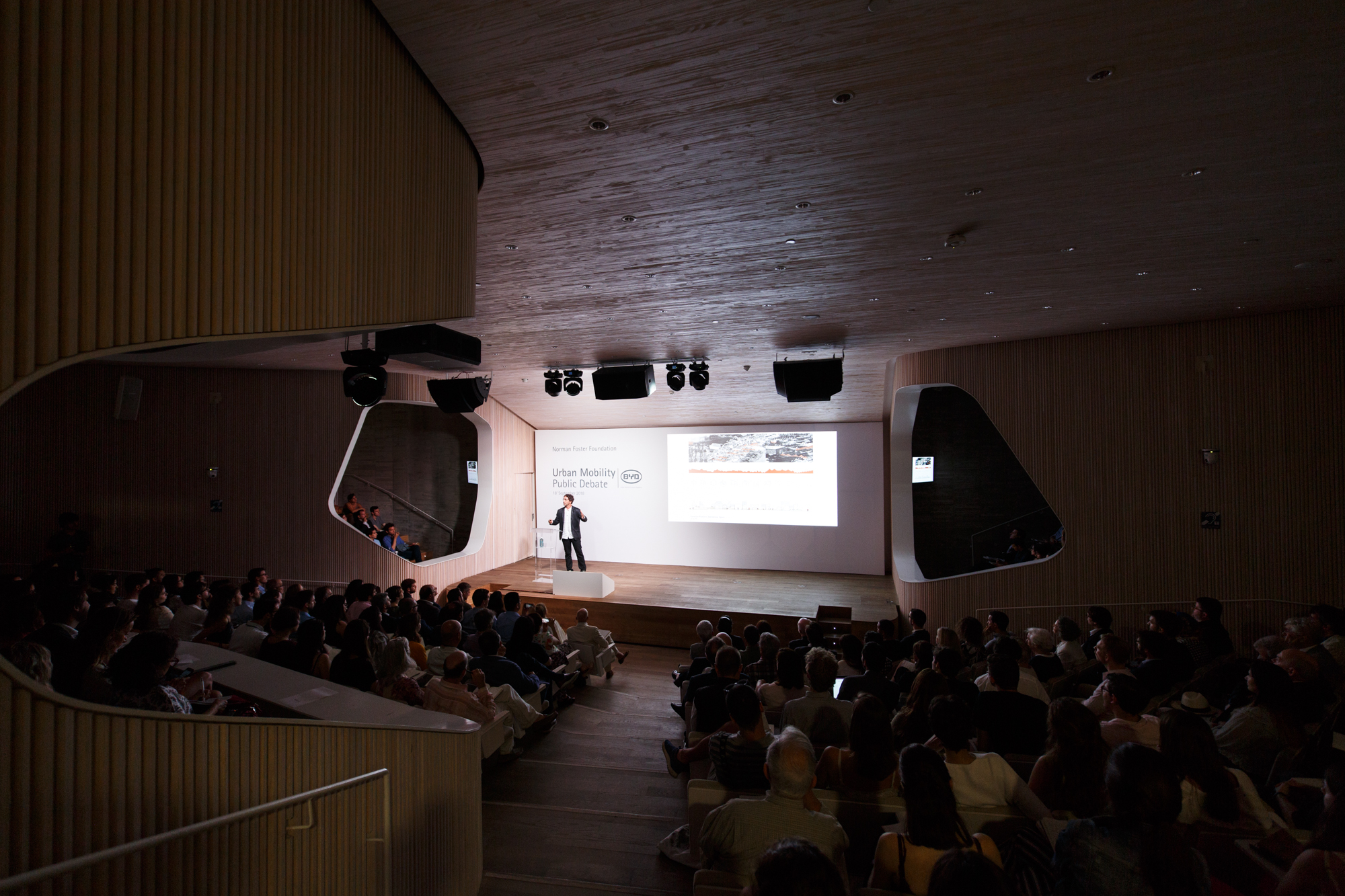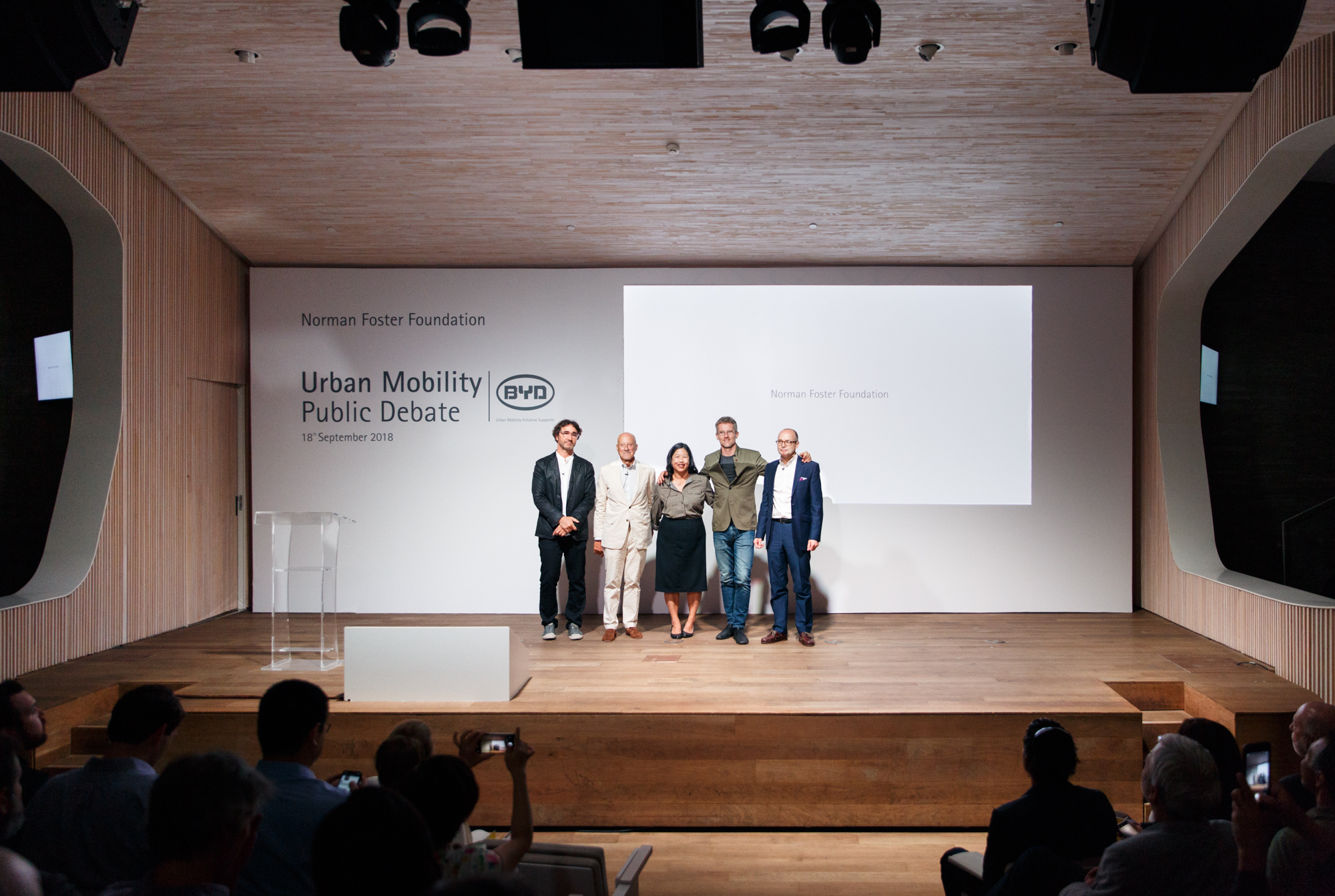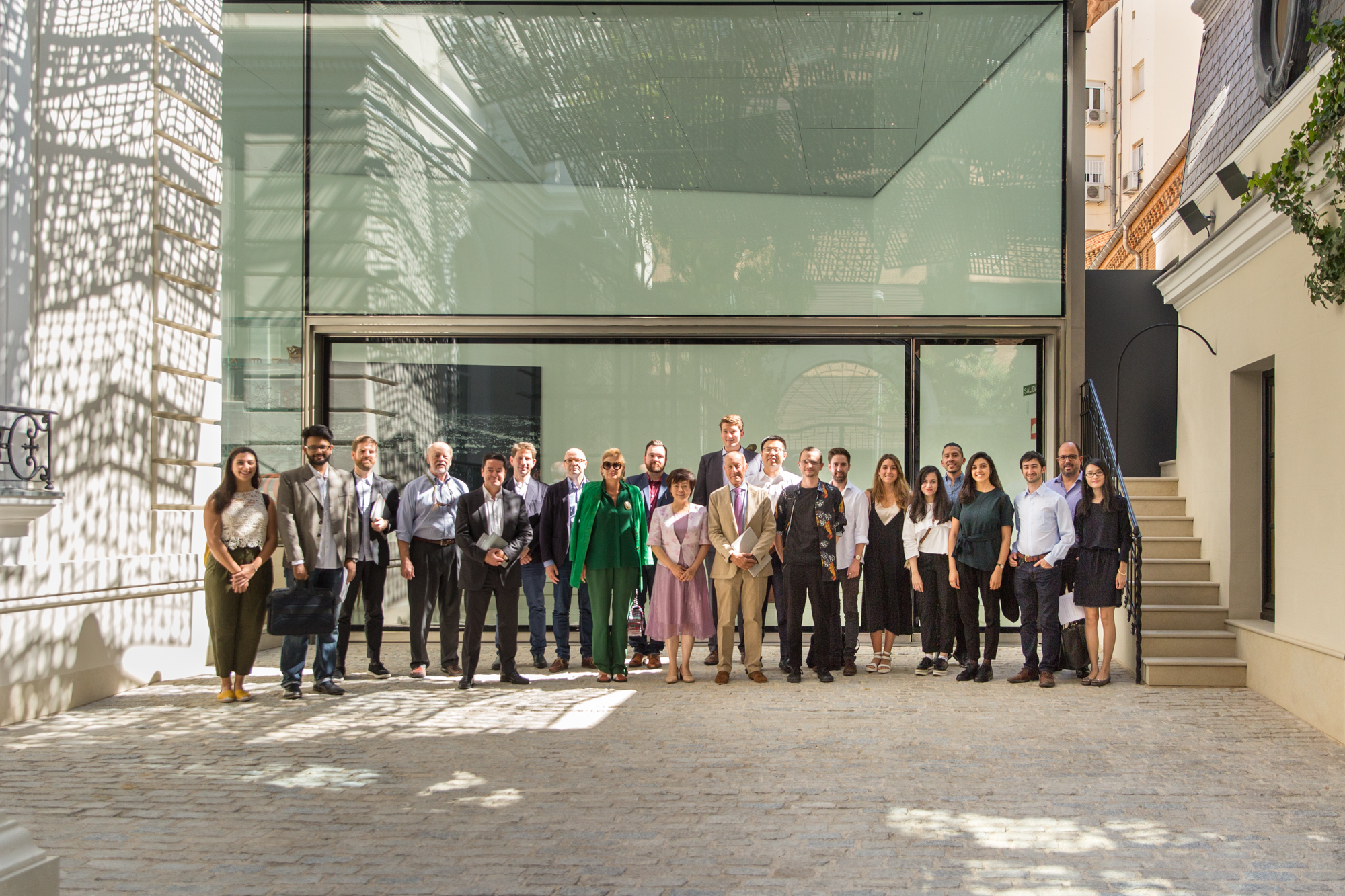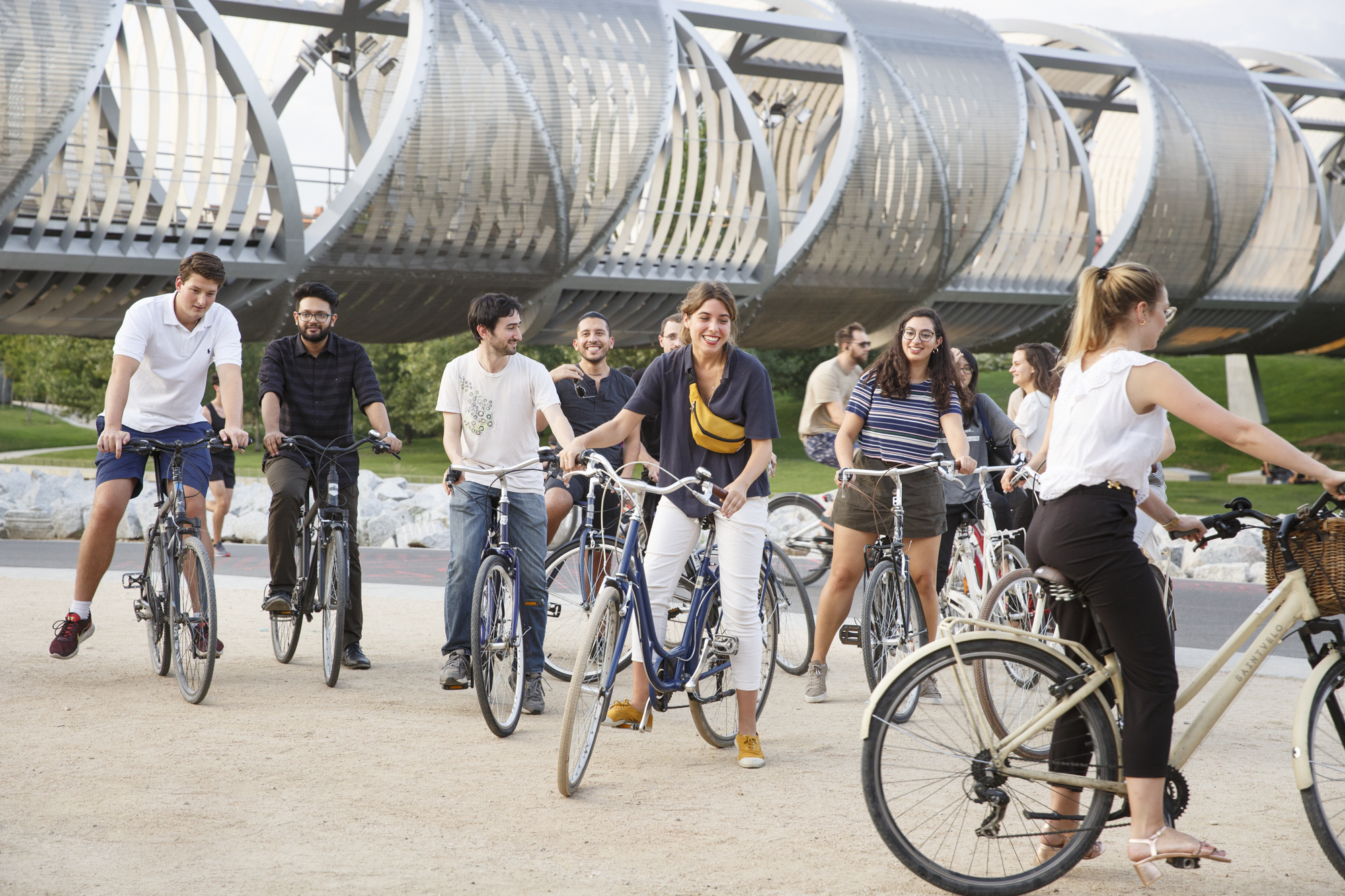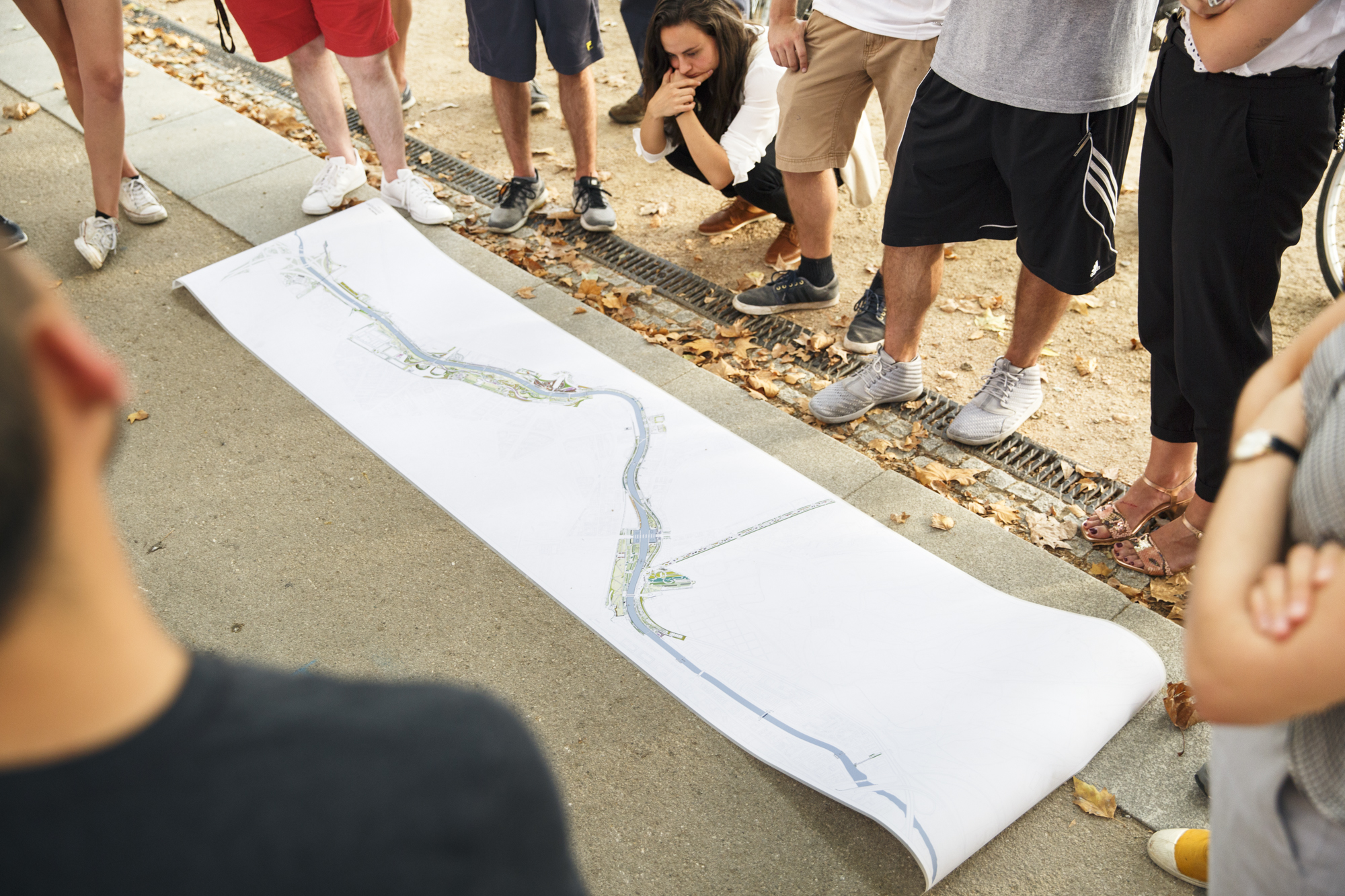Norman Foster Foundation Workshop 2018—Urban Mobility
September 2018
The Norman Foster Foundation Urban Mobility Workshop took place on 17-21 September 2018, with the support of BYD. The workshop focused on new urban technologies and how these could open up an exciting range of opportunities in which the infrastructure of movement and the architecture of buildings can physically merge together.
The Urban Mobility Workshop explored mobility together with technology integration and decision-making at an urban scale, leading to an exciting range of opportunities to physically merge together transport infrastructure and architecture. Under Tim Stonor’s mentorship and together with an academic body composed of architects, engineers and policy-makers, scholars were asked to make proposals focusing on one of the three cities chosen as case studies: Mexico City, Greater London and the San Francisco Bay Area. Within these three groups, scholars worked with different tools such as Walk Score and spatial accessibility models, based on land use, urban densities, and walkability parameters in order to define a final proposal in each of the chosen cities.
Introducing the concept of mobility, Tim Stonor inaugurated the series of seminar topics by inviting scholars to join what he called ‘dimensions of mobility’: space/scale, time/speed, height, mobility in place, purpose, trends in human or non-human mobility. Following Stonor’s vision, Alfredo Brillembourg, presented his holistic vision of urban transportation while encouraging scholars to re-invent architecture by intersecting it with other disciplines.
Focusing on public innovation, Tilly Chang, executive director of the San Francisco County Transportation Authority, lectured on San Francisco’s new mobility services and the governmental decisions and policies behind it. Laura Ballesteros, former undersecretary of Planning at the Ministry of Mobility in Mexico, based her seminar on what she considers critical to mobility and urban development: the power of citizens.
Reflecting on the impact the car could have in cities and on mobility, Carlo Ratti defended how ‘we need to stop building cities for cars and start building them for the people’. Moving the focus back to Mexico City, Fernando Romero analysed how mobility is singularly complex due to the different coexisting systems showing an ambitious underground system transporting around four million people daily, with a highly complex transport network.
Finally, with a lifespan devoted to the research and development of transportation systems, Thomas J. Stone gave scholars a profound insight into transportation systems and the possibilities of monorails as a valid transportation system for the imminent future.


